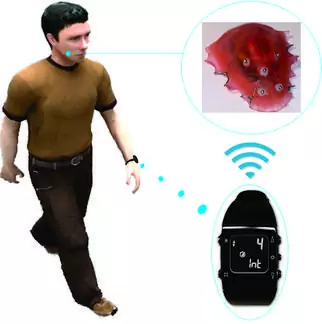
Initial patient trials are being conducted on an intraoral balance device that works by sending additional balance information to the brain to help vestibular patients who experience imbalance.Patients with vestibular loss often have difficulty in maintaining balance in daily living, as vestibular feedback plays an important role in spatial orientation and postural stability in the gravitational environment of the earth. Diagnosis of vestibular disorders is challenging and treatment options for vestibular loss can be limited.
Current treatment is typically vestibular rehabilitation therapy (VRT), which helps patients to adapt to vestibular loss through compensation. However, studies show that lost vestibular function cannot be fully substituted by visual and somatosensory cues. As a result, VRT may relieve some symptoms such as vertigo, but other symptoms may still remain such as dizziness, imbalance, and a floating sensation. Those symptoms often become worse in places where visual or proprioceptive inputs are unreliable or misleading.
An intraoral electronic balance aid is under development for patients with vestibular imbalance. The device is hidden and noninvasive for use in mobile environments. It is compact and can be fit inside one’s mouth and worn like a dental retainer. No surgical implantation is necessary, so it can be removed if needed. The device is designed to add balance information to the inadequate or incorrect information being sent to the brain by the dysfunctional inner ear. It works by monitoring a user’s head motion and presenting sensory feedback onto the roof of the mouth. This feedback is delivered using tiny electric signals in a pattern that corresponds to the direction and range of head tilting or movement. By sensing the additional feedback from the device, a user obtains a more stable gravitational reference and a better perception of self-motion. This helps with head orientation and guides body adjustment for postural stability. The device can be wirelessly controlled through a wrist watch for adjustment of device settings.
The device is currently being tested on patients with vestibular loss in an initial clinical study. Testing has shown a variety of positive effects on balance control. With practice, the device feedback may be used to improve balance, and a better alignment of center of gravity can be maintained as patients become aware of the self-motion of their own head. During walking, feedback in a certain direction could provide confirmation that may prevent a person from drifting out of balance in that direction.
In addition to helping patients maintain balance on a moving platform, the device has shown signs of other physical benefits. These benefits include: 1) Back muscles aiding in the balance test. This suggests that with the alternative feedback, the brain can recruit the right muscle groups to maintain balance, strengthening the body core; 2) Patients became more mentally focused while being able to maintain balance on the balance platform.
This device may hold promise for those individuals with dysfunctional inner ears who need additional balance information to carry on normal daily activities. Further testing will allow the company to present their information to the FDA for approval as an aid to improved balance function.
Reference:
Han B, Song H, Kim J. Vestibular Rehabilitation Therapy: Review of Indications, Mechanisms, and Key Exercises. J Clin. Neurol. 2011;7(4):184.
